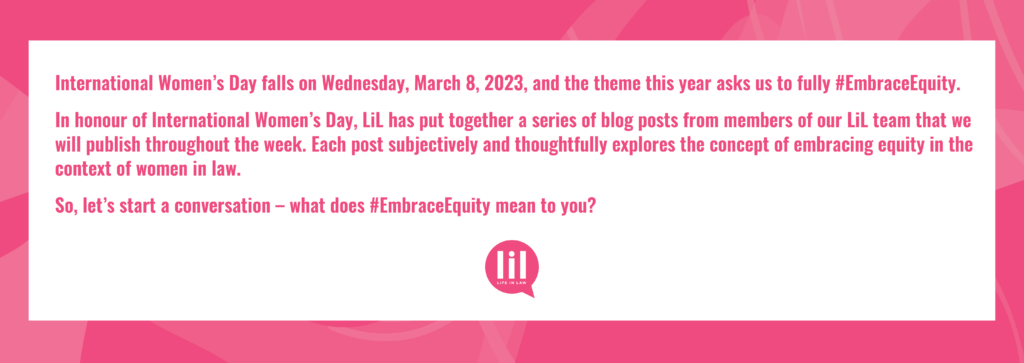Inclusion is the Magic Word

We’ve seen law firms (and all employers) take large strides over the last couple of decades to improve gender diversity in their workforce. The research is clear: a diverse workplace is a better workplace. But why, despite these efforts, do gender inequalities in the workplace continue to persist? A new article out of Forbes entitled “Women’s Equality In The Workplace Requires Greater Inclusion”[1], suggests that the problem might be the single-minded focus on diversity, or specifically, numerical representation as a proxy for diversity, with not enough emphasis on inclusion and equity.
Perhaps there has been less of an emphasis on the more “qualitative” factors of inclusion and equity because they are more difficult to measure. Attempting to tackle this problem, the author of this article and their colleagues developed a way of measuring inclusion at an organization by measuring the level of exclusion experienced by individuals within an organization. Their studies across 1635 corporate employees from 10 companies, with locations across 37 countries showed that women experience exclusion in the workplace at a rate 1.6 times that of men.
This research immediately reminded me of an impactful article I read several years ago by Dr. Hadiya Roderique, “Black on Bay Street.”[2] Dr. Roderique chronicled her experience as a black woman applying for a bay street articling job in Toronto. She discussed many aspects of the interview process that “othered” her, that made her feel as though she had to fit a round peg into a square hole, down to the slim-fitting grey suits and hosiery she was expected to wear, and the way in which she was blatantly overlooked while trying to engage in small talk with a group of white men at an OCI cocktail reception. In those situations, signs of affluence and privilege like extensive travel, experience playing expensive sports or an affinity for scotch seemed to be prized. Dr. Roderique said about the Toronto OCI hiring process:
No matter what firms claim, the hiring process is just not set up to test how good a lawyer you might be, whether you’ll craft that memo just so, or be willing to work 18-hour days on a pressing transaction. Instead gut feelings and underlying similarity seem prized over all else, a significant disadvantage for those from less privileged backgrounds.
These anecdotes have always stuck with me, and in some ways resonated with some of my own experiences in big law as a minority female.
Strikingly, across every company where inclusion was measured in this study, the category showing the greatest gender disparity was respect. While there is certainly exclusion disparity in respect of career opportunities and compensation, what really has an impact on employees are “day-to-day slights and microaggressions that result primarily from interactions with colleagues”. I am sure that most women can think of more than a few that they have experienced personally without too much difficulty.
So, maybe hiring a more diverse workforce simply is not enough. Embracing a culture of inclusion is crucial to hiring and creating a culture of retaining women in the workplace. The article quotes Kristen Anderson, Vice-Chair of European Women on Boards (EWoB) “As research has shown, diverse teams perform better than homogeneous teams… but only if they are managed inclusively.”
[1] https://www.forbes.com/sites/paologaudiano/2022/03/08/womens-equality-in-the-workplace-requires-greater-inclusion/?sh=5d8edccc2eb4
[2] https://www.theglobeandmail.com/news/toronto/hadiya-roderique-black-on-bay-street/article36823806/
About the Author

Roshni Veerapen is an associate at Harper Grey LLP practicing professional regulation and health law. Roshni is actively involved in the local legal community and is passionate about the mentorship and development of young lawyers.